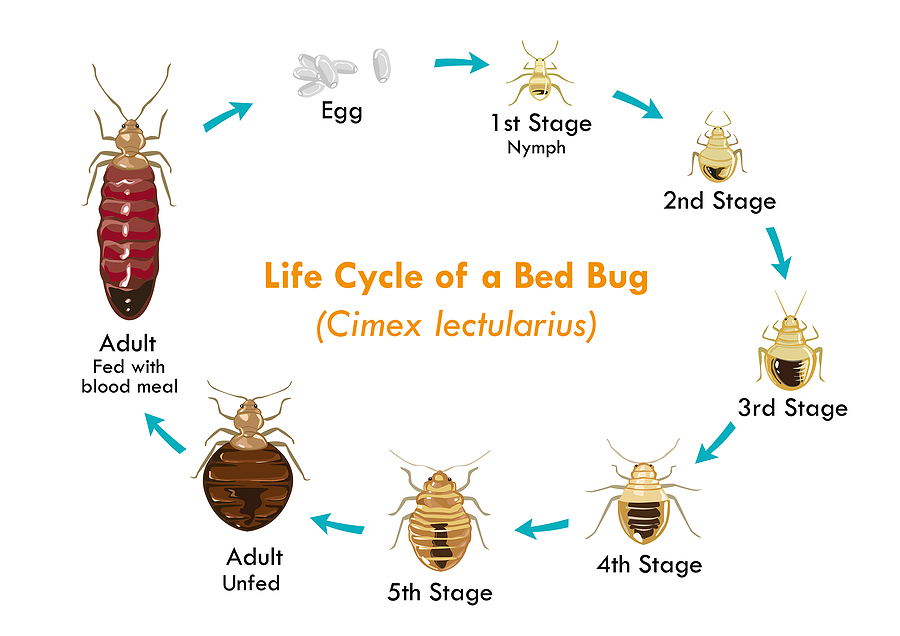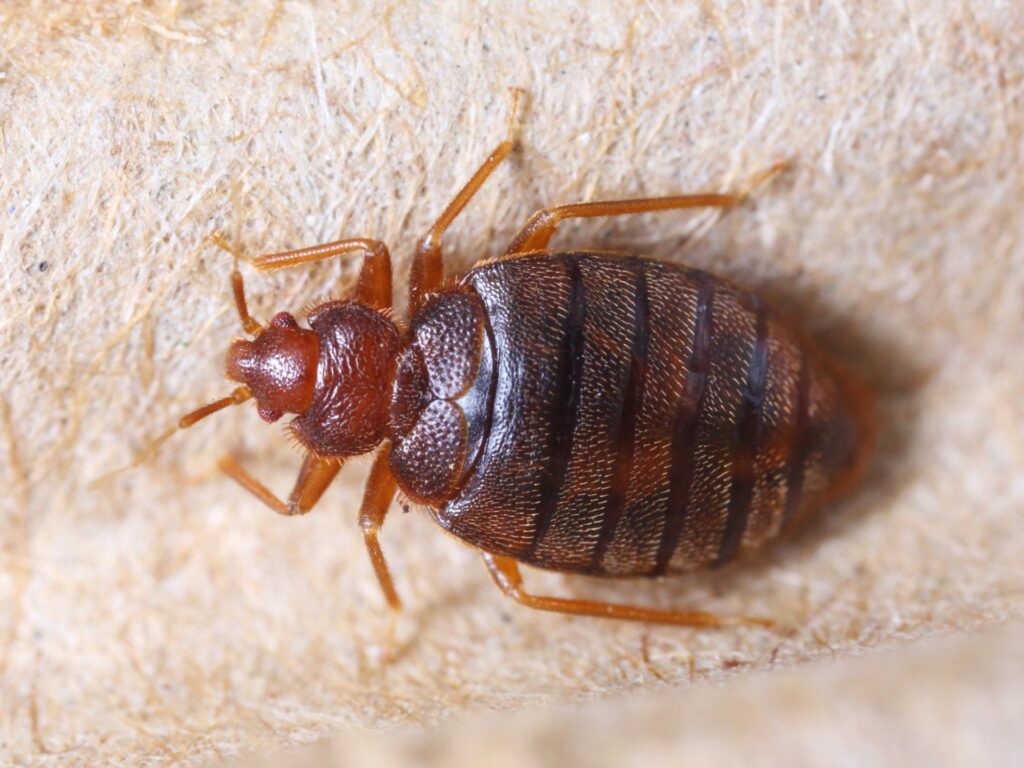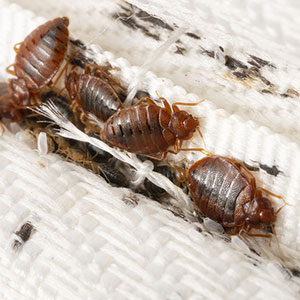Bedbugs are very small insects that can cause ditress. They have an oval and flattened shape, resembling small brownish-red discs. They are about the size of an apple seed, measuring between 4-6mm in length. When they shed their skins, they appear as lighter brown.
These bothersome creatures have mouths specifically adapted for piercing the skin and sucking blood. While they do not have wings, they have six sturdy legs that enable them to crawl on most vertical surfaces.
Similar to other blood-sucking arthropods, bedbugs inject saliva while feeding, which contains anticoagulant properties. This can make their bites initially go unnoticed.
The Lifecycle of a Bedbug
Bedbug eggs are elongated and have a whitish cream colour. As they near the hatching stage, they darken. The early stages of bedbugs, known as nymphs, are extremely tiny and can be difficult to spot without magnification.

The life cycle of a bedbug progresses through several stages: egg, several immature nymph stages, and finally, adulthood. This process, called incomplete metamorphosis, can take anywhere from 6 to 10 months.
Bedbugs reproduce through an unsettling process called “traumatic insemination.” The male bedbug stabs the female’s abdomen and injects sperm into the wound. A female bedbug can lay anywhere from 200 to 500 eggs over a period of two months. These sticky eggs attach to furniture or fittings.
Under good conditions, bedbug eggs can hatch in approximately a week, and the newly hatched nymphs go through five moulting stages before reaching maturity. Each malt requires a blood meal, and with an adequate supply of blood and favourable conditions, they can mature in as little as a month, producing multiple generations per year. The typical lifespan of a bedbug is around ten months.
What do Bedbugs Like?

Bedbugs are attracted to the warmth and carbon dioxide emitted by a host and can quickly locate a suitable feeding site. They can remain inactive for weeks or months and “awaken” when they detect biological signatures like CO2.
Bedbugs are nocturnal and tend to feed when people are asleep, as it is the safest time for them to obtain a meal without being disturbed. However, in heavily infested areas, they may become opportunistic and feed during the day if conditions are just right. When startled, they move swiftly and emit an odour.
How can I determine if I have bedbugs? What are the early signs of a bedbug infestation?
Detecting bedbugs can be challenging as their bites are often mistaken for mosquito bites or allergic reactions.
However, there are several signs that may indicate an infestation.

- Look for red and irritating bites, typically in rows on your neck, shoulders, back, legs, or arms
- Check for small clusters of reddish-brown spots or dark faecal spots that resemble ink dots. These are often found on the bed frame, upholstery, or the underside of the mattress
- Notice any small blood smears on the bedclothes or on your headboard
- Look for bedbug malt skins, pale-white eggs, and empty eggshells. These may be small but are still visible to the human eye
- The most obvious sign, although not always the first, is actually seeing the small brown insects themselves in and around your bed frame or sleeping area
It’s important to note that bites alone do not necessarily mean you have a bedbug infestation. Look for these other signs, and if you’re unsure, it’s best to seek assistance from a pest professional like The Pest Master.


